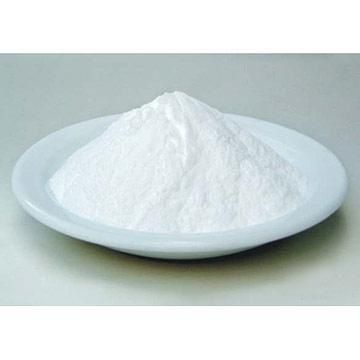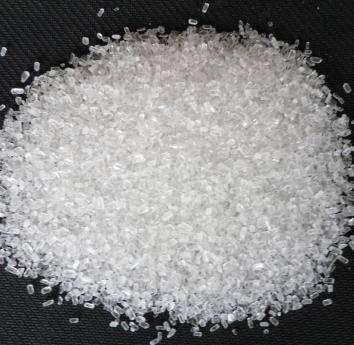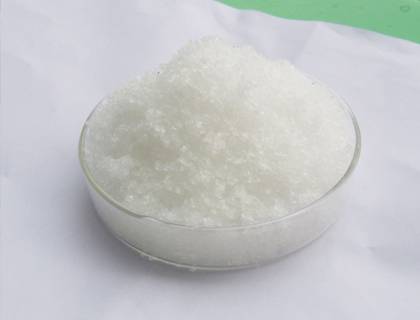Best Price on Citric Acid Flavoring Agent - Tributyrin – Standard Imp&exp Detail:
Tributyrin is emulsified from butyric acid and glycerin, does not decompose in gastric juice, slowly releases into butyric acid and glycerol under the action of pancreatic lipase, repairs intestinal villi, inhibits intestinal harmful bacteria, and promotes nutrients. Absorption and utilization. The use of tributyrin in young animals has the effect of reducing diarrhea after weaning in young animals, reducing weaning stress, increasing survival rate and increasing daily weight.
Synonyms: glyceryl tributyrate
Molecular Formula: C15H26O6
Molecular Weight: 302.36
Cas No.: 60-01-5
Tributyrin Specification:
|
Cotent |
95% |
|
free butyric acid |
2% max |
|
yellow liquid |
Tributyrin Mainly used in the manufacture of food, soap, candles, etc., also used as a solvent.
Tributyric acid glyceride does not decompose in gastric juice, and slowly releases into butyric acid and glycerin under the action of pancreatic lipase, repairs intestinal villi, inhibits intestinal harmful bacteria, and promotes the absorption and utilization of nutrients.
The use of tributyrin in young animals has the effect of reducing diarrhea after weaning in young animals, reducing weaning stress, increasing survival rate and increasing daily weight.
Its main uses in animal husbandry can be summarized as:
1, all over the stomach – 100% over the stomach;
2, anti-intestinal – the intestine effectively absorb at least 100ppm butyric acid to prevent colonic vegetative diarrhea and proliferative ileitis;
3, the protective mucosa – the fore intestine, the midgut, the hindgut three points evenly absorbed, effectively repair intestinal mucosal damage, comprehensive protection of the intestinal mucosa;
4, promote lactation – increase feed intake of sows, promote sow lactation;
5, fast energy supply – provide rapid energy for intestinal mucosal cells, promote the rapid growth and development of intestinal mucosa;
6, long and neat – to promote weaned piglets to eat, improve the absorption of nutrients, significantly improve the uniformity of the pigs.
Mechanism of action:
The intestinal mucosa has a physiological function of absorbing nutrients and an immune barrier. Modern nutritional physiology studies have shown that the mucosal barrier plays a key role in nutrient absorption and disease prevention and control. The morphology, structure and function of animal intestinal mucosa are influenced by many factors, such as animal age, nutrition, pathogenic microorganisms and environment. In the young animal stage, the structure and function of the intestinal mucosa are not well developed. Some stress factors (such as weaning) also significantly affect the structure and function of the intestinal mucosa, leading to the destruction of the intestinal mucosal barrier, ultimately affecting the health of the animal and Growing.
The intestinal mucosa is the fastest growing tissue in the early stage of animal growth and one of the fastest-renewing tissues in animals. Rapid growth and development require constant energy and various nutrients. Therefore, the intestinal mucosa is the most sensitive tissue to the nutrients in animals. The repair of intestinal mucosal damage caused by some stress factors (such as weaning) requires energy and nutrients. Pigs are used to maintain the required energy, with approximately 24% of the intestines. Intestinal epithelial renewal involves the migration of mucosal cells, ie the migration of cells from the crypt to the villi, which is an energy-consuming process. Reducing the renewal of intestinal epithelial cells will save energy for growth, and effective energy is a guarantee for normal renewal of the intestinal epithelium.
The functional unit of the small intestine is the villus, the functional cell of the villus. The intestinal epithelial cells originate from different crypt cells. In the crypt, the intestinal epithelial cells are secreted. When it migrates to the side of the villi, it matures into the absorbed villus cells. The microvilli become longer and the number of cells increases. If the villus top is damaged, the mature absorbed cells are lost, and the immature crypt cells produce a net secretion consequence, resulting in a severe digestive absorption disorder of the villus cells. Histologically, the shortening and fusion of the villi is called “fluff atrophy”, which leads to a decrease in the functional surface area of the mucosa and a decrease in the absorption capacity, resulting in diarrhea in the piglets.
The underlying cause of changes in the structure of the small intestine villi is that the supply of effective energy of the mucosal cells is insufficient, which inevitably leads to endogenous “starvation” of the intestinal cells, which cannot maintain normal renewal and repair of tissue damage.
Early weaning of piglets due to a series of stress factors including physiological, psychological, environmental and nutritional factors (such as feed antigens), leading to intestinal structural and functional damage, such as intestinal villus atrophy and crypt hyperplasia; digestive enzyme activity decreased, Reduced immune function; decreased digestion and absorption capacity of the small intestine. Production is characterized by decreased feed intake, growth retardation and diarrhea. A good diet must be provided to solve these problems. A good diet composition can reduce the energy required for intestinal mucosal cell migration, provide effective energy nutrition, and repair intestinal structural and functional damage caused by weaning stress.
Tributyl glyceride does not decompose in gastric juice and slowly releases into butyric acid and glycerol under the action of intestinal lipase. Butyric acid is a short-chain fatty acid, which is the main source of energy for intestinal epithelial cells. It can significantly stimulate the proliferation of intestinal epithelial cells and increase the height of small intestine villi, thereby promoting nutrient absorption, enhancing immunity and improving animal health, thus overcoming weaning stress in piglets. Syndrome, improve production performance and reduce mortality.
Product detail pictures:

Related Product Guide:
Brick by brick, Mutual Materials plant add layers here and abroad > Spokane Journal of Business | Hsca Demolition Agent
Fresh Delicious Homemade Mustard Recipe (Gluten-Free) – Gluten-Free Recipes: Soups, Sauces, Dressings & Chowders | Hsca Demolition Agent
To create much more benefit for consumers is our company philosophy; customer growing is our working chase for Best Price on Citric Acid Flavoring Agent - Tributyrin – Standard Imp&exp, The product will supply to all over the world, such as: Birmingham, Kenya, Rwanda, We supply skilled service, prompt reply, timely delivery, excellent quality and best price to our customers. Satisfaction and good credit to every customer is our priority. We focus on every detail of order processing for customers till they have received safe and sound items with good logistics service and economical cost. Depending on this, our products and solutions are sold very well in the countries in Africa, the Mid-East and Southeast Asia. Adhering to the business philosophy of ??customer first, forge ahead', we sincerely welcome clients from at home and abroad to cooperate with us.
Good quality, reasonable prices, rich variety and perfect after-sales service, it's nice!
-

Wholesale Price Non Explosive Cracking Agent -...
-

Rapid Delivery for Monosodium Glutamate Factory...
-

2017 High quality Expansive Mortar For Mining -...
-

Big discounting Beef Flavor Bouillon Cube - Ma...
-

2017 Good Quality Magnesium Chloride Crystal Gr...
-

Renewable Design for Factory Supply Guangxi Fac...






